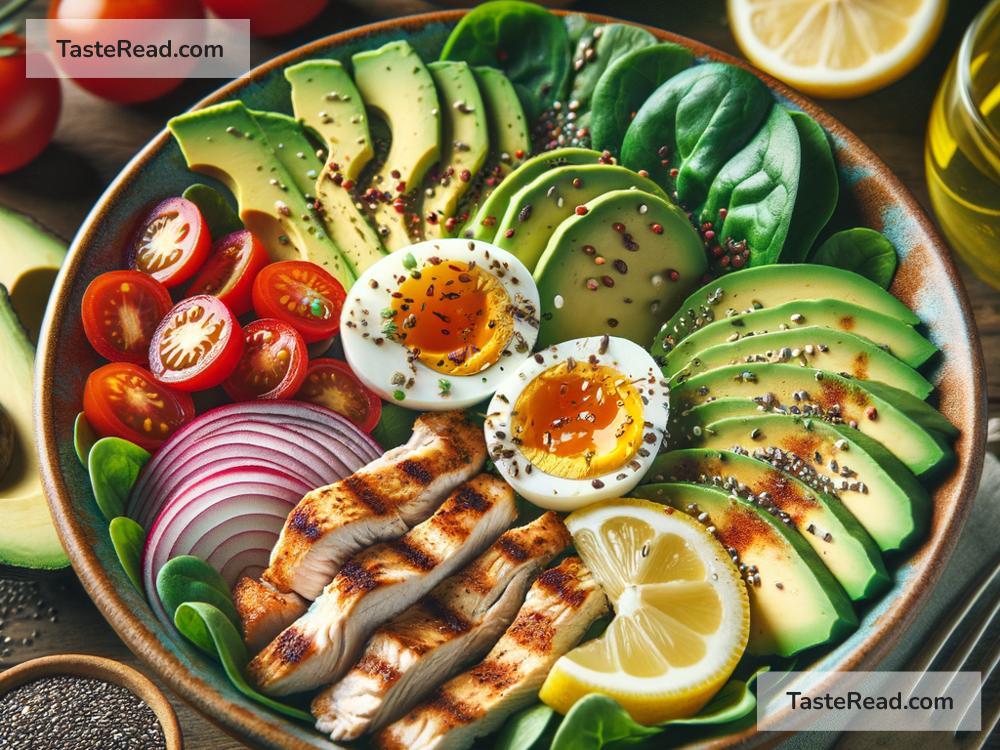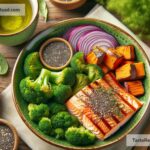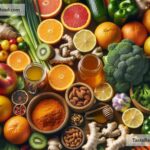Foods for Weight Loss: A Simple Guide to Eating Right
If you’re trying to lose weight, the foods you eat matter just as much as exercise or staying active. You don’t need fancy diets or expensive products to make progress. The secret is to choose the right foods that help you feel full, energize your body, and prevent overeating. In this guide, we’ll talk about some simple, healthy foods you can add to your diet to help with weight loss.
1. Fruits and Vegetables: Nature’s Best
Fruits and vegetables are at the top of the list when it comes to weight-loss-friendly foods. They’re high in water and fiber but low in calories. This means you can eat a lot of them without worrying about gaining weight.
- Examples of great fruits: Apples, berries (like blueberries or strawberries), oranges, and watermelons. These fruits are sweet, satisfying, and packed with vitamins.
- Vegetables to try: Broccoli, spinach, carrots, zucchini, and peppers. These are rich in nutrients and help keep you full.
Fruits and vegetables also take time to chew and digest, making it harder to overeat compared to snacks like chips or cookies.
2. Whole Grains: Fuel for Energy
Whole grains like brown rice, quinoa, oats, and whole-grain bread are great choices for weight loss. Unlike refined grains (like white bread or sugary cereal), whole grains are full of fiber, which helps keep your digestion healthy and makes you feel full longer.
For breakfast, try oatmeal topped with fresh fruit or nuts. For lunch or dinner, enjoy brown rice or quinoa alongside your protein and vegetables. These meals give you long-lasting energy without causing spikes in your blood sugar.
3. Lean Proteins: Build and Repair
Protein is an important nutrient for your body. It helps build muscle, repair tissues, and keeps you feeling full. Lean proteins are especially helpful for weight loss because they are lower in fat compared to options like fried meats.
- Good protein options: Skinless chicken breasts, turkey, fish (like salmon, tuna, or cod), eggs, and plant-based proteins like tofu, lentils, and chickpeas.
- Snack ideas: Hard-boiled eggs or Greek yogurt. These are convenient and packed with protein to keep you full between meals.
Eating enough protein during meals can reduce hunger and prevent unhealthy snacking later in the day.
4. Healthy Fats: Don’t Fear the Fat
Not all fats are bad! Healthy fats can actually help you lose weight when eaten in the right amounts. Foods like avocados, nuts, seeds, and olive oil are sources of healthy fats. They keep you full, help your body absorb certain nutrients, and support a healthy metabolism.
- Snack ideas: A handful of almonds, a slice of avocado toast, or chia seeds mixed into your yogurt.
- Cooking tip: Use small amounts of olive oil instead of butter for cooking.
Remember, even healthy fats are high in calories, so enjoy them in moderation.
5. Fiber-Rich Foods: Feel Full Longer
Foods rich in fiber prevent overeating by keeping you fuller for longer. Fiber helps you digest food slowly, which improves your energy levels and reduces cravings.
Some fiber-rich foods include:
– Beans and legumes like black beans, lentils, and chickpeas
– Whole fruits (instead of fruit juices)
– Vegetables like leafy greens, bell peppers, and celery
– Seeds, such as flaxseeds and chia seeds
Adding fiber to your meals helps control your appetite and keeps your digestive system healthy.
6. Low-Calorie, High-Volume Foods: Keep Portions Bigger
If you’re someone who enjoys eating larger portions, low-calorie, high-volume foods might be your best friend. Foods like soups, salads, and air-popped popcorn allow you to eat a lot without consuming too many calories.
Make a big salad loaded with greens, cucumbers, and tomatoes, and top it with a low-fat dressing. Or, enjoy a vegetable soup that’s warm, filling, and packed with nutrition. These options let you eat more while keeping your calorie count low.
7. Water and Green Tea: Drink to Stay on Track
While not technically a “food,” water and beverages like green tea play an important role in weight loss. Drinking enough water keeps your body hydrated and can help reduce hunger. Sometimes, thirst can be mistaken for hunger, leading you to eat when you don’t actually need to.
Green tea, on the other hand, is a natural drink that can help boost your metabolism. Drink it unsweetened to maximize the benefits.
8. Foods to Avoid or Limit
While adding healthy foods to your diet is key, weight loss also means limiting certain types of food. Try to reduce sugary drinks like soda, junk food like chips, and ultra-processed snacks. These are often high in calories but don’t fill you up, leading to overeating.
Final Thoughts
Losing weight is easier when you focus on eating the right foods instead of just cutting calories. The key is balance—combine lean proteins, whole grains, fruits, vegetables, healthy fats, and fiber to create meals that taste good and support your goals. Drink plenty of water and stay mindful of portion sizes.
You don’t need to make big changes overnight. Start small by swapping unhealthy snacks for nutritious ones, or by adding more vegetables to your plate. Over time, these small steps can lead to big results. Weight loss isn’t about starving yourself—it’s about finding foods that work for your body and lifestyle.


